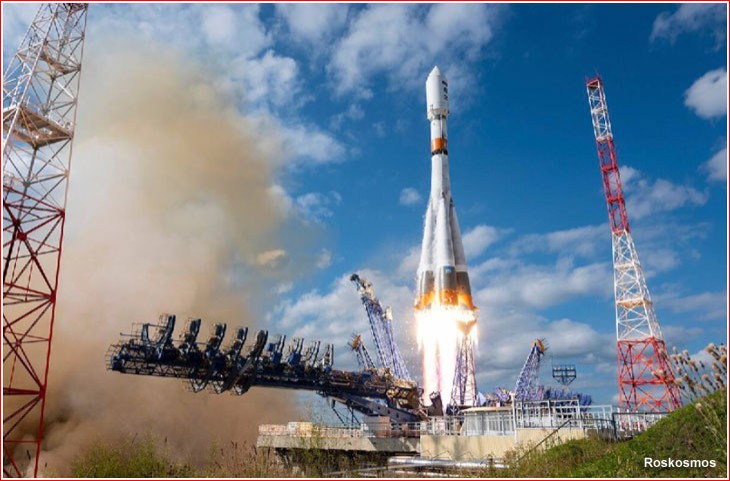
Russia's ambitious lunar exploration mission took an unexpected turn when its lunar lander, Luna-25, crashed into the Moon in August.
After weeks of investigation, Russian space agency Roscosmos has now attributed the failure to a malfunction in the onboard control unit.
This incident has prompted Roscosmos to consider expediting future lunar missions and implementing crucial upgrades.
The Lunar Crash
On August 19, Russia's lunar mission suffered a severe setback as Luna-25 hurtled toward the lunar surface, ending in a catastrophic crash.
The crash came just days after India's Chandrayaan-3 successfully landed near the Moon's south pole, adding to the humiliation of the Russian space program.
Reuters reports that the investigation conducted by Roscosmos revealed that Luna-25's propulsion system had fired for a whopping 127 seconds instead of the planned 84 seconds.
This unintentional thrust adjustment led to a fatal misalignment with the intended orbit, causing the spacecraft to collide with the lunar surface.
Control Unit Malfunction
Roscosmos reveals that the primary culprit behind this catastrophic failure was a malfunction in the onboard control unit. This control unit failed to issue the command to shut down the propulsion system, leading to the prolonged thrust that doomed the mission.
The exact nature of this malfunction was attributed to incorrect data commands, specifically related to the spacecraft's angular velocity measuring unit.
Roscosmos chief Yuri Borisov acknowledged that a commission of investigators had completed their examination and was preparing a detailed report for the government. Despite this setback, Borisov expressed Russia's commitment to continue lunar exploration.
Read Also : NASA Astronaut Frank Rubio Sets New US Record for Longest Spaceflight After 371 Days in Space
Mission Upgrades and Future Plans
In the wake of Luna-25's failure, Roscosmos is contemplating a series of critical upgrades and a potential acceleration of its lunar missions. According to Roscosmos, the follow-up mission could be sent as early as 2025 or 2026.
Two missions, Luna-26 and Luna-27, are currently under consideration to be moved forward in the timeline, although specific dates were not provided.
Luna-26 is planned as an orbital mission, while Luna-27 will be a lander equipped with a drilling rig. These missions are crucial for determining the presence of frozen water near the Moon's south pole, a resource that could support future human exploration.
The Russian space agency has emphasized its continued commitment to ambitious space endeavors, including developing a new Russian orbital station to replace the aging International Space Station.
Countries like Turkey, Brazil, and South Africa have expressed interest in this project.
Challenges Ahead
Despite the eagerness to relaunch lunar missions, the road ahead is fraught with challenges.
The Luna-25 failure has exposed gaps in the flight control process, which may require extensive testing and redesign.
Additionally, the devaluation of the ruble and economic consequences resulting from geopolitical conflicts pose further obstacles.
Stay posted here at Tech Times.
Related Article : India's Historic Chandrayaan-3 Moon Lander May Be Dead for Good After Facing Harsh Space Environment

ⓒ 2026 TECHTIMES.com All rights reserved. Do not reproduce without permission.




